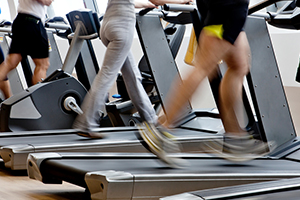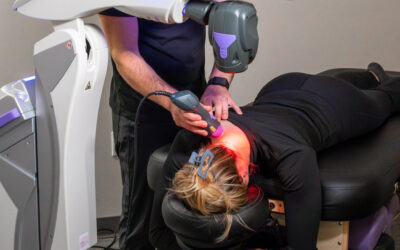Like most other things in our life, fitness is best when simplified. That’s why today, I’m sharing with you our top two simple tips to help you avoid injuries at the gym (or with your home workout).
 Here’s the truth, this is not the first piece of information ever produced around this subject. Hardly. A single YouTube search on ways to avoid injury at the gym will yield thousands of hours of content.
Here’s the truth, this is not the first piece of information ever produced around this subject. Hardly. A single YouTube search on ways to avoid injury at the gym will yield thousands of hours of content.
While I’m clearly not the first to write on this matter… I intend to be the best.
Why?
Simply put, I have considerably more experience on this topic than anyone else, and it’s time that someone cut through the malarkey and gave it to you straight; void of all the fluff, marketing, and hyperbole.
Here is what you will not learn in this blog: the 20-minute “prehab” warm-up you need to perform before you even begin the first set of your planned workout. Or, the ‘Top 3 Exercises’ you need to do to wake up your core or whatever.
I’m not saying that this is BS, and you shouldn’t pay it any mind. Heck, I’ve written and produced similar content on this same (i.e. Improve Your Shoulder Mobility in 5 Minutes or Less).
However, 90% of us just need proper advice on how to optimize and simplify our training.
Not add in more through convoluted hacks, drills, and “neuromuscular exercises.” That’s the value this blog is going to bring.
So without further ado, Let’s begin, shall we?
Tip #1: Avoid Doing Too Much Too Soon
We’ve all done this. Every single one of us at some point got all excited about starting a new fitness routine or joining a new gym and ultimately paid the price for being a little overzealous.
It’s ok!
We’ve all been there and what matters is that we learn from our mistakes to prevent history from repeating itself.
At Tangelo, we promote the 10% Rule.
What does that mean?
Let me break it down for you. Say you are training for a 5k and want to avoid hurting yourself during the training process.
Start with a distance that might disappoint you if you are new to running. Yes, you read that correctly. Remember, there won’t be a second day of training if you hurt yourself on day one.
For simplicity, say you ran 10 minutes. The next run, we recommend adding 1 minute. I know, it doesn’t sound like a lot but that one minute is an extra 150-180 steps.
In terms of frequency, your weekly volume is entirely predicated on your recovery time. A more novice athlete is probably going to need more time to recover between sessions. That’s ok – that’s called smart training.
Remember, this 10% Rule can be applied to any other fitness modality, including cycling, group fitness, and crushing some iron at the gym.
Speaking of the gym, let’s talk about tip #2.
Tip #2: Train Through A Full Range Motion
This tip is regularly preached but rarely practiced. The importance of the full range of motion is rarely exhibited in the gym from squats, deadlifts, bench press, and even calf raises. Why? I think most people forget about its importance and instead focus on the squeeze.
Yes, that is important, but that is not why we are here.
What we fail to understand is that our mobility is heavily influenced by our range of motion during training. For instance, if we squat to partial depth, our joint mobility and muscle flexibility will be adapted to that range of motion.
If you are only doing rack pulls, don’t be surprised if you can’t touch your toes or pick up clothes off the floor without significantly rounding your back.
In other words, your flexibility depends on your training mobility – and your mobility (or lack thereof) can contribute to musculoskeletal stress in injury.
So if you want to improve your mobility to help prevent injury – instead of reaching for that foam roller or performing a myriad of dills, start by making sure you are lifting through your greatest range of motion with quality form. You’ll be shocked at how your mobility improves.
Conclusion
Thank you so much for reading this blog. I hope it provides some helpful information that you can use to get the most out of your training.
Like most other things in our life, fitness is best when simplified. Instead of adding complexity into your routine, I ask you first to ask yourself if you are optimizing what you are currently doing.
See you next time!




